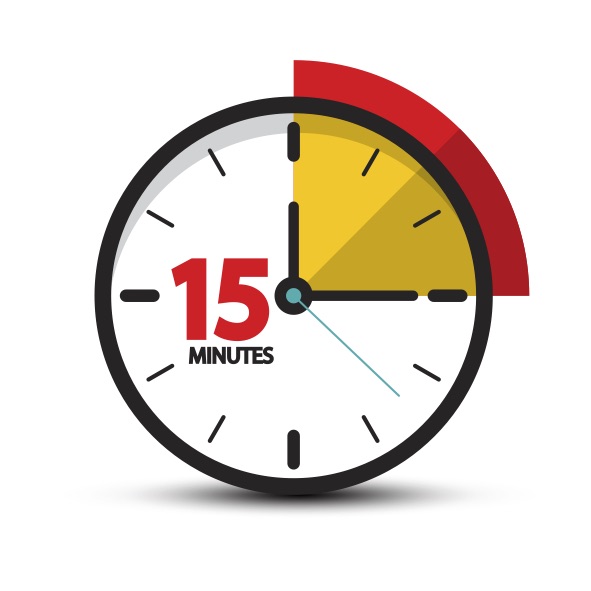
Do your team members have a daily rhythm of daily team huddles? Or are they so lost in the busy-ness of work that they have no time to talk? Of all the meetings that I suggest to clients, the most controversial is always daily huddles (or scrum or daily standup or team huddle). They tell me it’s going to disrupt the flow of the day. People will be off-site or with a customer. There are a hundred reasons why it won’t work.
I say to them, ‘Trust me – this small change will make a monumental difference to your business.’ And it does. Every time. Committing to this single act taking 15 minutes will give your business the momentum it needs for scaling up.
Where does the idea of a daily huddle come from?
The daily huddle, daily stand-up or daily scrum meeting are all inspired by John D. Rockefeller’s daily lunch habit. Every day Rockefeller would sit, eat and talk with the key leaders of Standard Oil. As they had lunch, he taught his philosophy and shared and repeated his priorities. As Standard Oil grew, the daily lunch habit continued and was then established as one of his key rhythms of success.
In his first best-selling book Mastering the Rockefeller Habits: What You Must Do to Increase the Value of Your Growing Firm, Verne Harnish sets out all of John D. Rockefeller’s key rhythms of success. One of these is the daily huddle to mirror this lunchtime routine.
When’s the best time for a daily huddle?
Most firms have their daily huddle at the start of the day but the timing’s up to you. A CEO who came to one of my recent workshops deploys HR managers into various sites. His team members are always on the road but he wanted to try daily huddles. So I helped him arrive at the best time. We settled at 8.45 am as his people usually turned up to their site early and sat in their cars. The perfect time for a team huddle! They dialled in and he noticed an instant sense of camaraderie. He’s really pleased with the way it’s bonded his team together, making them feel less isolated.
Here at Foundry Farm, we have a team huddle twice each day, at the beginning and end. This gives us peace of mind that, if something crops up, there’s a set time to discuss it. Things don’t get lost.
Maybe arrange daily huddles to roll up. It’s a great way to ensure that you, as CEO, have a true finger on the daily pulse of your business. Suggest that front-line team members have their huddle first thing, maybe at 8.45 or 9 am – or a time that works for all of them. Follow this with a huddle for the managers and then a huddle between execs and managers. That way, any issues or stucks can flow right up to the top for resolution. By 10 am, you’ll know what’s going well and what needs to change today.
What’s the purpose of a daily team huddle?
The biggest reason to bring in daily huddles is they save time. Yes, they take 15 minutes out of every person’s day. But I reckon you get back at least an hour of email nonsense that they would otherwise be doing. At every point, you’re trying to resolve stucks – if there’s something getting in the way of someone making a contribution, the daily huddle is the time to sort it. Similarly, if you need something from someone, it can be shared quickly without you having to chase it. There’s something about a commitment face-to-face that’s much harder to break than if it’s done by email. You’ll find stress levels are substantially reduced – both yours and your team’s.
This is like upping your cadence when you start running. Instead of an annual plan with monthly check-ins, you’re moving to a quarterly plan with key objectives and working these back to weekly priorities and daily tasks. And it’s these daily tasks you’re checking on to see if they’ve been done.
How long should a daily scrum last?

15 minutes tops. Make sure it doesn’t dribble on. This takes real discipline and you’ll need an assertive timekeeper to keep the pace up and ensure every team member has equal air-time.
Do you need to stand during a daily huddle?
They’re called daily stand-ups for a reason. It’s actually simple physics. Newton’s First Law of Motion states that a body at rest will remain at rest unless an outside force acts on it. And a body in motion will remain in motion.
So don’t let team members stay at rest by sitting down. Keep them standing and in motion. Otherwise, the huddle will take longer and it’s more likely to get sidetracked into fixing issues or even discussing the weather.
If you know people on your team consistently get off-topic and never make it back to the initial point, make it a rule that the person speaking can only talk for a maximum of 2 minutes then they’re done. Cutting them off acts as a reminder to keep the meeting short and on topic.
But remember, it’s not really about standing up. It’s about keeping the daily huddles short and to the point. So if your team members want to sit down occasionally – who cares, as long as they stay on point?
How do you run a daily huddle?
First, on the huddle agenda start with good news. This is an excellent habit for all your meetings. It doesn’t have to be business-related. It could be personal. But don’t skip or undervalue this. It builds psychological safety and kicks things off on a positive note. Sometimes people shrug their shoulders, so ask them what they’re thankful for. Perhaps they felt a moment of joy when their kids went off to school. Celebrate that.
If your team huddle is first thing, get everyone to say, ‘This is what I intend to do today’. You’re not looking for a complete breakdown of tasks. But what are the key, high-value activities they’re going to spend most of their day doing? The one thing that you can count on them to get done today to move the needle forwards? This gives you, as a team, the opportunity to fine-tune. You can also make sure that activities are connected. There’s no point being 10 steps ahead of someone else if you need to be over the finish line together.
Go through agenda items rapidly, taking it in turns to speak. This keeps everyone on the ball and keeps the pace up. You’ll need someone to run the meeting and this could be alternated. The emphasis is on quick-fire contributions to stop any unnecessary waffling.
Who should attend a daily meeting?
Definitely no more than eight people. If you have more in your team, they need to be split into smaller groups of multiple huddles. Otherwise, there’s just too much to cover in the fifteen minutes. Keeping your huddles small will make them much more effective.
How do I capture information from a daily huddle?
I advise clients to use MGS (Metronome Growth Software) to capture consistent information every day. Most important is keeping daily track of metrics, for both individuals and for the company. This will ensure you stay on course to hit quarterly and annual goals.
Get your team members into the habit of planning for their morning huddle as the last thing they do before leaving work. At the end of their day, they need to be thinking, where am I stuck, what progress have I made on my metric and what am I thankful for?
Are daily scrums effective?
Clients who start daily meetings report that they’re sensational and they should have done them earlier. I simple change lasting only 15 minutes that enables real momentum to build and keep the flywheel of their business turning.
Remember that first, all-important question on the Gallup Q12 measure of staff engagement? ‘I know what’s expected of me at work’. If you’ve rolled out OKRs or KPIs for every team member in your organisation, then daily huddles are going to work a treat. They’re an opportunity for daily praise and resolution of issues.
When I interviewed Horst Schulze, founder of the world-leading Ritz Carlton group, he described how the daily meetings of his team members had enabled the business to build a world-class reputation for service. Every day, his team members would come together in a daily huddle and read out one of their 24 service mantras. And then another team member would be singled out for praise having embodied this during the previous week. This is how you embed vision and values and bring them alive. It’s like reciting the Lord’s Prayer in church – these rituals become part of the fabric of your business.
Written by business coach and leadership coaching expert Dominic Monkhouse. Contact him to schedule a call here. You can order your free copy of his book, Mind Your F**king Business here.

